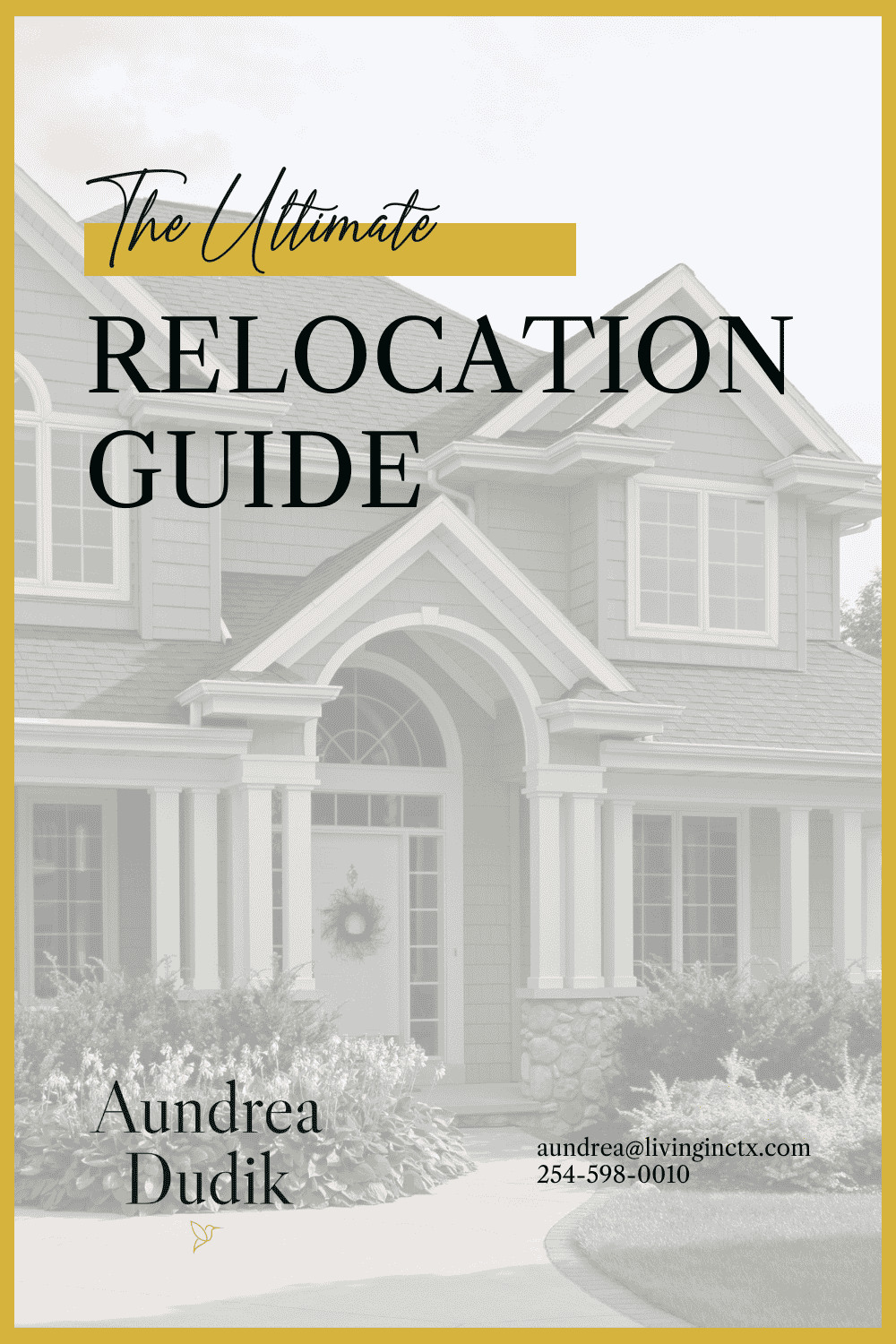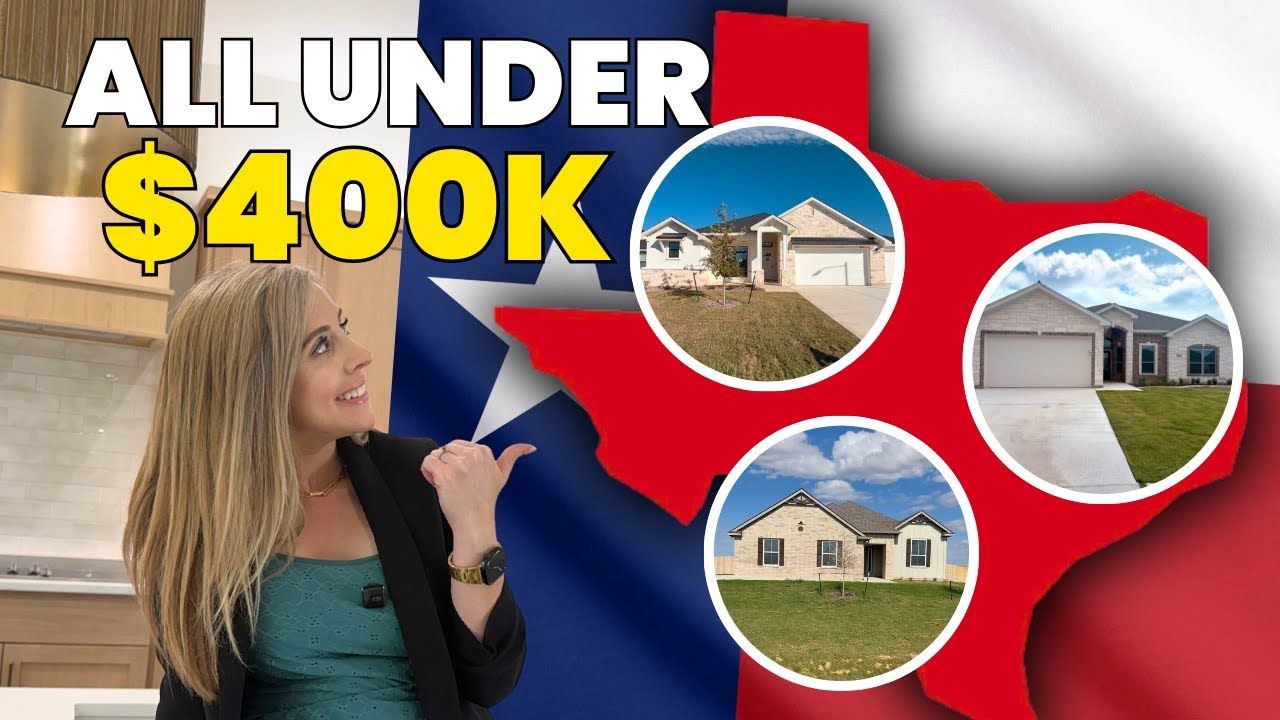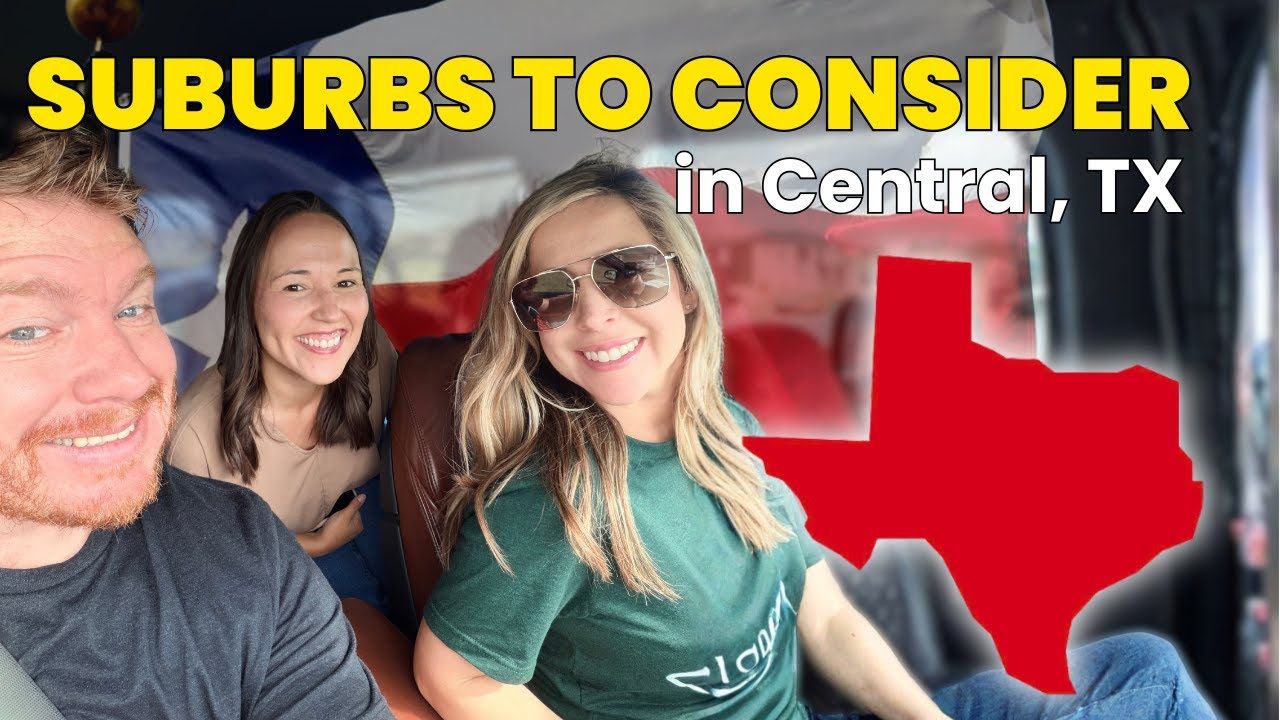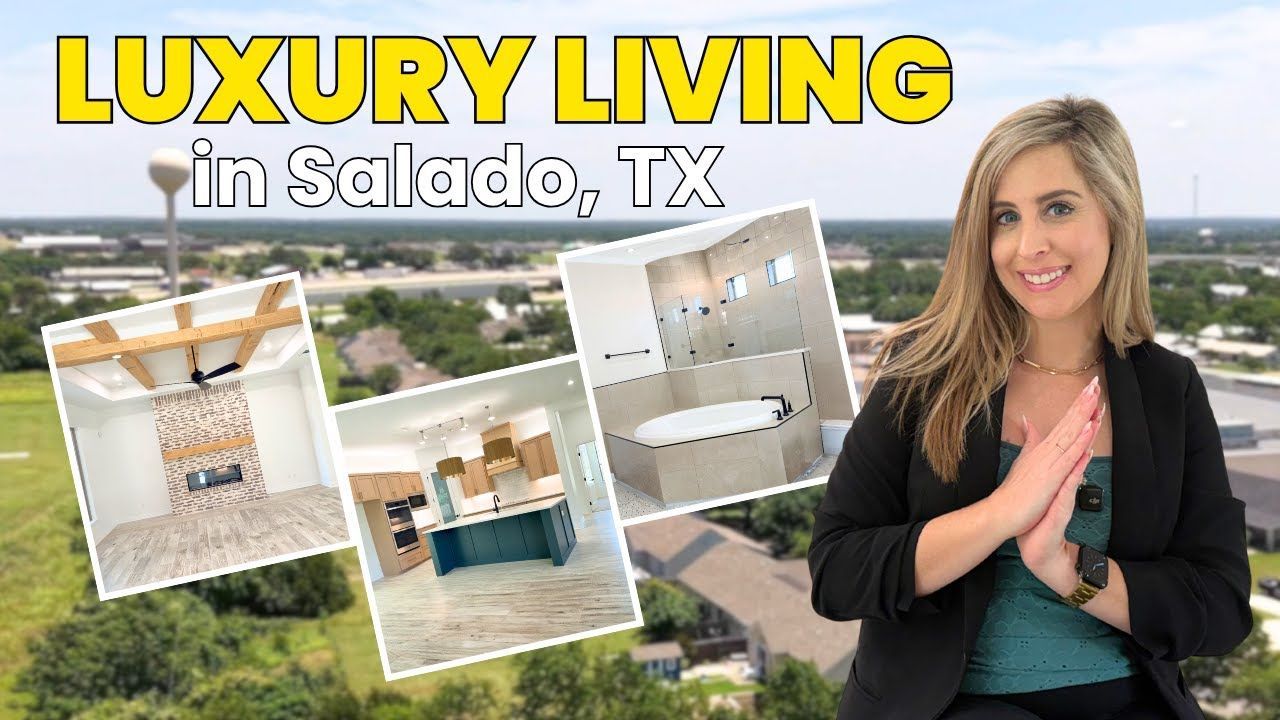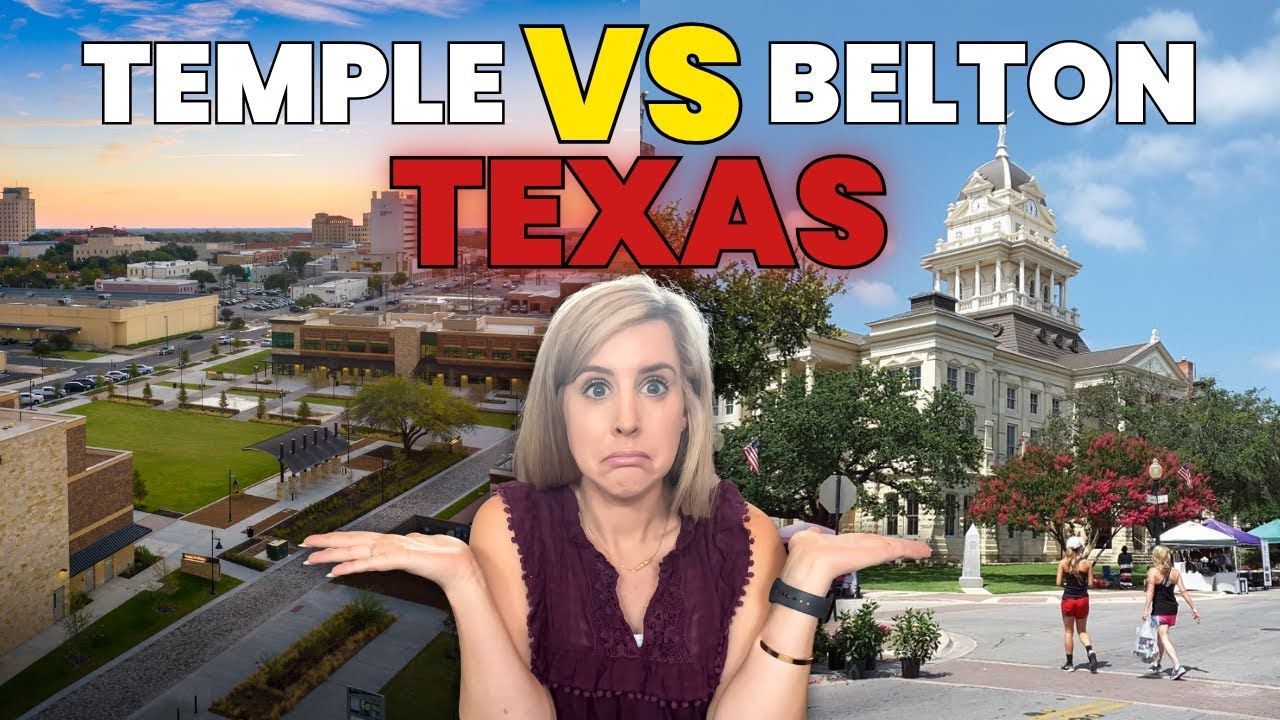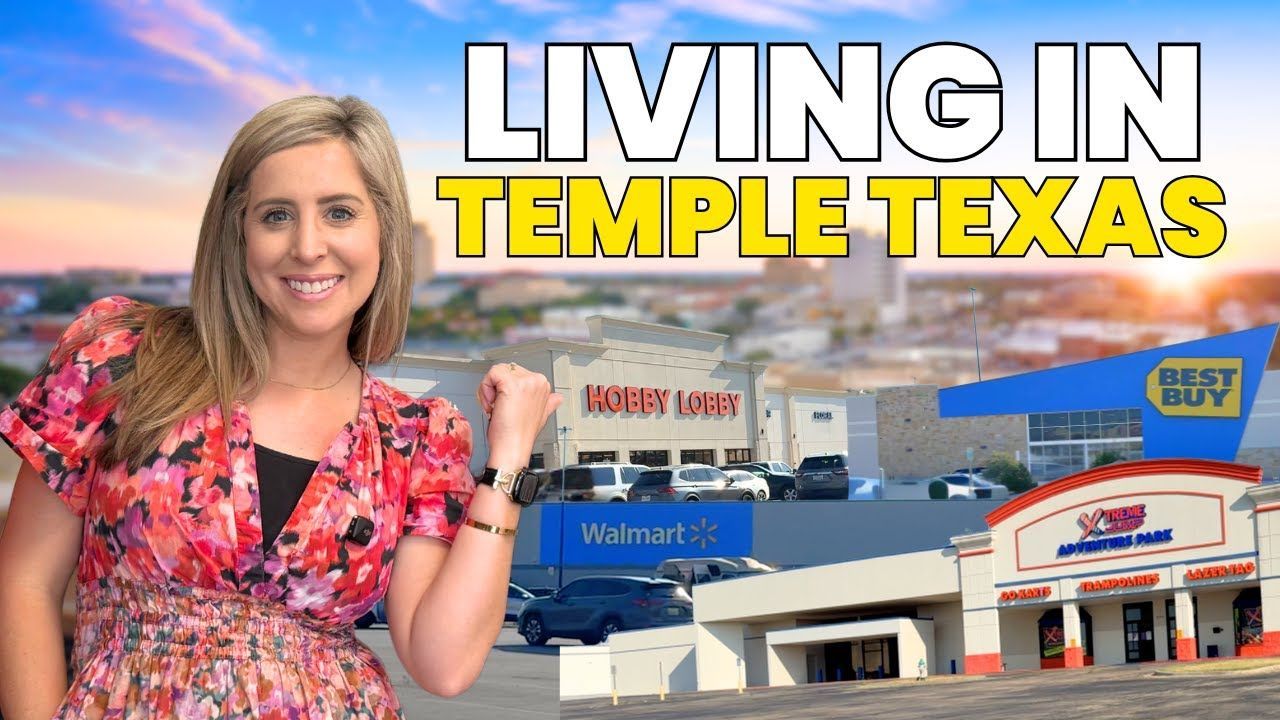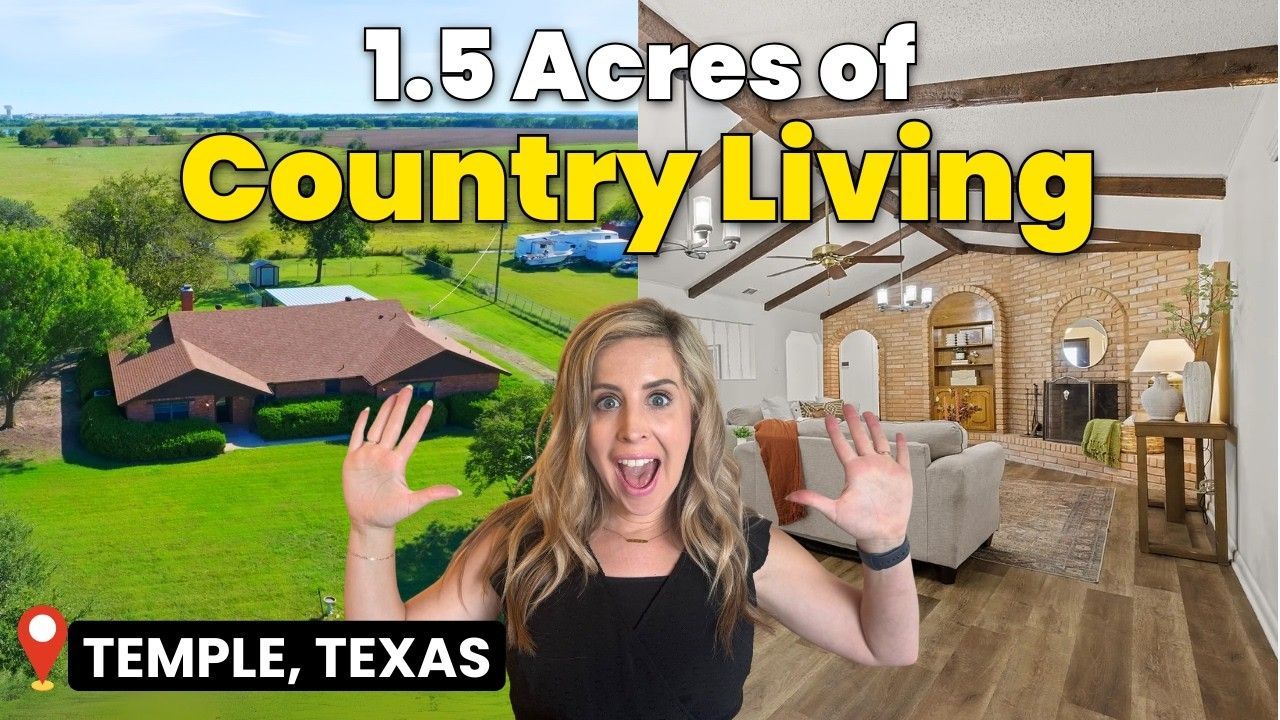BEST Neighborhoods NEAR Temple's Medical Centers
If you’re searching for the best neighborhoods near Temple's Medical Centers, this guide walks you through everything I cover in my local relocation planning — from commute realities to shopping, food, and housing price points. I created a custom interactive map and spent a lot of time analyzing neighborhoods within a short drive of Baylor Scott & White Medical Center so you can make a confident move. In this article I’ll share what matters most when relocating for work, family support, or access to world-class healthcare.
Table of Contents
- Introduction to relocating near Baylor Scott & White
- Overview of Residential Areas Near Temple’s Medical Centers
- Living Near Baylor Scott & White Medical Center in Temple, Texas
- Custom Map of Temple and Belton Neighborhoods
- Best Nearby Communities Around Temple’s Medical Centers
- Exploring Smaller Towns Near Temple
- Shopping and Dining Near Baylor Scott & White Hospital
- Housing Options and Price Points in Temple, Texas
- HOA vs. No HOA Communities Near Temple’s Medical Centers
- New Construction Homes Near Temple’s Medical Centers
- Desirable Temple Communities with No HOA Fees
- Practical Tips for Your Home Search Near Temple’s Medical Centers
- FAQs About Moving to Temple and Choosing the Best Neighborhoods Near Temple's Medical Centers
- Final Thoughts — Finding the Best Neighborhoods Near Temple's Medical Centers
- Additional Resources
Introduction to relocating near Baylor Scott & White
Relocating is a big decision, especially when the move is driven by career changes, medical school, or the need to be near high-quality healthcare. If your destination is Temple, Texas — home to Baylor Scott & White Medical Center — you’re not just choosing a house: you’re choosing neighborhoods, commute rhythms, amenities, and daily life. I made this guide to answer the practical questions I hear most: where do people who work at the medical center live? How long will the commute be? Which neighborhoods offer new construction versus resale homes? What about schools, shopping hubs, and restaurants?
Throughout this guide I’ll refer to my custom Google My Maps layout (I included one when I recorded this guide) and the real-time market research I pulled directly from the MLS to help you understand current price ranges, ages of homes, and HOA expectations. My goal is to move you beyond a basic Zillow search and give you a clear, realistic picture of life near Temple’s medical centers.

EXPLORE OUR CENTRAL TEXAS MEDICAL RELOCATION GUIDE
Overview of Residential Areas Near Temple’s Medical Centers
First, let’s anchor ourselves: Baylor Scott & White Medical Center in Temple is a major destination medical center and the flagship of the Baylor Scott & White Healthcare System. It’s a Level I trauma center and a teaching hospital affiliated with Texas A&M University School of Medicine. Because of that, the campus is large — multiple specialty facilities sit together, including McLane Children’s Hospital, a heart and vascular hospital, cancer treatment facilities, and dozens of specialty clinics.
The location of the medical campus — just off I-35 and adjacent to US-190 — shapes how neighborhoods and shopping centers are oriented. For most people relocating to work at or near Baylor Scott & White, a roughly 10- to 12-minute drive from the hospital is a practical sweet spot. That’s the radius I focused on when mapping out community options.
Living Near Baylor Scott & White Medical Center in Temple, Texas
Living near Baylor Scott & White Medical Center is attractive for several reasons:
- Access to comprehensive healthcare, including pediatric and maternal services;
- Career opportunities and affiliation-driven research and education;
- Retail and dining clustered around main corridors for convenience;
- Short commutes to the VA hospital and to nearby Fort Hood (about 25 minutes), which attracts many veterans and military families to the area.
Because the hospitals are centrally located, the daily commute pattern radiates outward from the campus. In Temple, 31st Street and Adams Avenue are key arteries that connect neighborhoods to the hospital complex. If convenience to the campus is your priority, plan to focus on neighborhoods that sit northeast, northwest, southeast, and southwest of the medical campus within that 10- to 12-minute window.
Custom Map of Temple and Belton Neighborhoods
I created a detailed Google My Maps layer that highlights neighborhoods, schools, grocery stores, retail hubs, restaurants, and all the Baylor Scott & White facilities. On that map, I used color-coded blocks to indicate neighborhood clusters and price zones. The map separates shopping hubs (purple markers), schools, and hospital locations so you can visually see commute times and amenity clusters.
Temple and neighboring Belton are only about 10 minutes apart, and many of the neighborhoods that work well for medical employees fall across both cities. You’ll see clusters along US-190, along I-35, and pockets of both new construction and older resale homes much closer to the hospitals.
Best Nearby Communities Around Temple’s Medical Centers
Below I’ll break down the major neighborhood groupings I mapped, what you’ll typically find there, price bands, and HOA expectations. I pulled current inventory and historic build years from the MLS to ensure accuracy. When I say “best neighborhoods near Temple's Medical Centers,” I’m speaking to a mix of priorities: shortest commute, good resale value, newer construction, walkable dining options, and family-friendly amenities.

North of US-190 and East of I-35 (Established resale neighborhoods)
These areas offer older, established homes — a lot of character, mature trees, and the shortest possible drives to the campus. Most homes were built between the 1920s and the 1970s. Price points currently range roughly from $121,000 to $400,000, with many clustered in the $120k–$300k range. One big advantage: many neighborhoods here have no HOA, which appeals to buyers who want more freedom with exterior changes or who want to avoid recurring HOA fees.
East of 31st Street, North of the Hospital (Close-in, older options)
This pocket includes some of the absolute closest homes to the main hospital. Build dates skew older — early 1900s up to the 1950s — and you’ll find a mixture of move-in-ready homes, flip opportunities, and lower-price properties needing renovation. Expect prices sometimes under $200,000 for fixer options, and still no HOAs in most blocks. This area is ideal if proximity and walkability to the hospital are your top priorities.
South of US-190, East of I-35 (Mixed resale + some newer pockets)
This region is a blend. Some pockets are older resale; other pockets have newer construction tucked around the outskirts. Typical build years span the 1970s to as recently as 2022. Homes here balance shorter commutes (7–10 minutes) with newer floor plans and family amenities. Prices generally run $150k–$399k in this zone. You’ll also be minutes from Lions Junction Water Park and local trails — a nice perk if you have young kids or like outdoor recreation.
New Construction Corridors (2018–2025)
Several newer subdivisions are being built 10–12 minutes from the hospital, mostly with HOA structures and modern floorplans. These neighborhoods typically list in the $330k–$730k range, with some higher-end custom homes around $1.2 million in certain pockets. These are great if you prefer contemporary finishes, energy-efficient features, and guaranteed community standards.
Tucked, Mostly Resale Neighborhoods (No HOA)
There are also lovely established neighborhoods tucked behind the children’s hospital that are both desirable and mostly HOA-free. Price ranges are generally $149k–$500k. These areas appeal to buyers seeking established yards, curb appeal, and a sense of community without HOA rules.
Exploring Smaller Towns Near Temple
If you’re open to living a little farther out (but still within reasonable commute distance), a handful of smaller towns offer distinct lifestyles:
- Belton — immediately adjacent to Temple with great restaurants and boutiques along West Adams; very popular for families and commuters;
- Troy and Nolanville — smaller, quieter communities with more land options;
- Killeen — attractive for anyone with ties to Fort Hood; commute time to the base can be reasonable depending on where you live;
- Morgan’s Point and other lake-adjacent communities — great if lake access and weekend recreation are priorities.
All these communities are within an easy drive of Baylor Scott & White Medical Center and expand your housing options beyond that 10-minute circle if you want larger lots, quieter streets, or a different community vibe.
Shopping and Dining Near Baylor Scott & White Hospital
One of the things I love to emphasize is that living near the medical centers doesn’t mean sacrificing lifestyle amenities. Temple’s retail and dining are concentrated in smart hubs that make life easy:
- 31st Street corridor — grocery stores (Walmart Supercenter, Sam’s Club, H-E-B regional store), quick-service restaurants, Panera, and coffee spots;
- US-190 corridor — big-box retail like Hobby Lobby, Ulta, Marshalls, Lowe’s, Home Depot, Best Buy, and Target clustered in practical shopping nodes;
- West Adams corridor — Belton-side shopping, local boutiques, and additional dining choices within a 5–10 minute drive;
- Local favorites — Meg’s Kitchen (locally sourced breakfast and lunch), Seven Brew Coffee, King Noodle for Asian cuisine, Jason’s Deli, and various fast-casual spots right across from the hospital.
For most hospital staff, grabbing lunch between shifts, walking across the street to a coffee shop, or accessing big-box retail within a short drive is a huge convenience.
Housing Options and Price Points in Temple, Texas
Let’s talk specific price bands and what you’ll get in each:
- Under $200k: Often older resale homes, sometimes needing renovations or cosmetic updates. These can be excellent for first-time buyers or investors looking for flips.
- $200k–$400k: The bulk of the market for many Temple neighborhoods. You’ll find a mixture of updated resale homes and some newer construction, 3–4 bedroom options, and good resale value.
- $400k–$700k: Larger newer homes, often in HOA neighborhoods with modern floor plans, energy-efficient builds, and community amenities.
- $700k+: Higher-end custom builds and luxury new construction in select pockets, sometimes on larger lots with premium finishes.
When I ran MLS searches for specific blocks inside my map, I found older neighborhoods with homes built between 1920 and 1976 selling from about $121k to $400k. On the other side, newer subdivisions built between 2018 and 2025 were hitting the $330k–$730k range, and a few custom pockets scaled higher in price.
HOA vs. No HOA Communities Near Temple’s Medical Centers
HOAs are a common concern for buyers. Here’s how they typically play out around Temple’s medical centers:
- Many resale neighborhoods have no HOA, especially the older, closer-in areas.
- Newer subdivisions commonly have HOAs, but in Central Texas — including Temple — HOA fees tend to be lower than national averages. Typical annual fees are often under $300, with a max I’ve seen around $550 per year.
- HOA rules vary: some are extremely lenient; others are stricter about exterior changes. If HOA costs or covenants worry you, we can pull governing documents before you commit. There are protections we can include in purchase contracts if you’re concerned about certain restrictions.
For many buyers relocating to Temple for medical work, the choice becomes a tradeoff: do you prefer the predictability and new-home standards of an HOA community, or the flexibility and lower monthly costs of an established no-HOA neighborhood? Both have strong resale potential here; it’s a matter of fit.
New Construction Homes Near Temple’s Medical Centers
If you prefer new construction, Temple and nearby Belton have several active builders. Newer neighborhoods typically include:
- Modern open floorplans, energy-efficiency upgrades, and builder warranties;
- Community amenities like playgrounds, walking trails, and sometimes amenity centers;
- HOAs that manage common areas and community standards;
- Quick access to FM93, which connects to Fort Hood and to I-35 for longer commutes north/south to Waco or Austin.
Price ranges for new construction near the campus usually start around $330k and can go up to $730k or more depending on lot choice and upgrades. Some neighborhoods include both new builds and resale options, giving you flexibility depending on your timing and budget.
EXPLORE OUR CENTRAL TEXAS MEDICAL RELOCATION GUIDEDesirable Temple Communities with No HOA Fees
For buyers who want community but not an HOA, there are very appealing pockets that are mostly HOA-free and still well-maintained by proud homeowners. These neighborhoods are often tucked away, behind the children’s hospital, or in older established blocks. They offer:
- Lower recurring costs with no HOA dues;
- Older trees and mature landscaping;
- More flexible exterior options (paint, fencing, etc.);
- Strong demand for resale because many buyers appreciate both proximity and value.
Examples include pockets near 31st Street and some blocks south of US-190. Price points across these desirable HOA-free areas can be $149k–$500k depending on updates and lot sizes.
Practical Tips for Your Home Search Near Temple’s Medical Centers
Here are practical steps I recommend if you’re relocating to Temple for the medical community:
- Decide your must-haves: commute time, single-level floorplan, school zone, proximity to shops, or lot size.
- Use the 10–12 minute commute radius to prioritize neighborhoods that reduce your daily stress. A short commute can increase your quality of life dramatically during long shifts.
- If you want newer finishes and lower maintenance: focus on new construction and HOA neighborhoods (warranties and standards).
- If you’re budget-conscious and want older charm: focus on established resale neighborhoods north and east of the campus.
- Ask for HOA documents early if you’re considering an HOA neighborhood — review fees and restrictions before you make an offer.
- Check school boundaries on Temple ISD or neighboring districts if school assignment matters. I’ve plotted all local schools on my map so you can see exactly where they sit relative to neighborhoods.
- Walk or drive the neighborhoods at different times of day to understand traffic patterns on 31st Street and US-190.
EXPLORE OUR CENTRAL TEXAS MEDICAL RELOCATION GUIDE
FAQs About Moving to Temple and Choosing the Best Neighborhoods Near Temple's Medical Centers
What is the typical commute time to Baylor Scott & White Medical Center from nearby neighborhoods?
Most neighborhoods I highlight are within a 7–12 minute drive of the main hospital and children’s campus. If you pick a neighborhood inside the 10-minute radius I used on the custom map, you’ll generally see commutes under 12 minutes in normal traffic.
Are there many grocery and retail options near the medical campus?
Yes. The 31st Street corridor and US-190 corridor are full of grocery stores, big-box retailers, and quick dining. You’ll find Walmart, Sam’s Club, H-E-B regional stores, Lowe’s, Home Depot, Best Buy, Target, and a cluster of restaurants and coffee shops within a short drive.
How expensive are HOA fees in Temple-area neighborhoods?
HOAs in Temple are generally affordable compared to many metro areas. Annual fees are typically under $300, and I’ve seen maximums near $550 annually. The rules vary, so review HOA documents for restrictions before buying.
Where should medical students or residents live for convenience?
If proximity is essential — especially during on-call rotations — the closest established neighborhoods east of 31st Street and north of the hospital are ideal. They provide the shortest commutes and immediate access to the main hospital entrance.
Are there family-friendly amenities near these neighborhoods?
Absolutely. You’ll find parks, walking trails, Lions Junction Water Park, frisbee golf, and family dining. Neighborhoods south of US-190 often have trails and small parks, and Belton’s West Adams corridor adds additional amenities and boutiques.
Should I prioritize no-HOA neighborhoods?
It depends on your priorities. No-HOA neighborhoods offer flexibility and lower fees, but HOA neighborhoods often provide modern amenities and consistent curb appeal. Both types hold value in Temple; pick what fits your lifestyle.
Final Thoughts — Finding the Best Neighborhoods Near Temple's Medical Centers
If you’re relocating for medical work or to be near family receiving care, Temple offers a range of practical options: established no-HOA neighborhoods close to the hospital, mixed resale neighborhoods with affordable pricing, and new construction communities with modern conveniences. My custom map and MLS research are tools I use to match buyers to communities that meet their commute, budget, and lifestyle needs.
When you’re ready, I can help you dive deeper: pull HOA documents, review school boundaries, or set up neighborhood tours. I love helping healthcare professionals, students, and families make smart moves that set them up for success in Central Texas.
Need help?
If you want the custom map I referenced, it’s included in the original listing information and I’m happy to send it directly. I also maintain a relocation page with medical-relocation resources, mortgage contacts, and downloadable guides to help you take the next step.
Grab your FREE Central TX Relocation Guide and start planning your move with confidence
Additional Resources
I regularly update neighborhood guides, market trends, and relocation checklists for Central Texas. If you want deeper neighborhood-by-neighborhood comparisons, school rating summaries, or a tailored list of homes within a certain commute time of the hospitals, reach out at 254-598-0010 and I’ll help you plan your search.
Thanks for reading — I hope this helps you find the best neighborhoods near Temple's Medical Centers for your priorities. If you’d like personalized help, I’m here to guide you through every step.
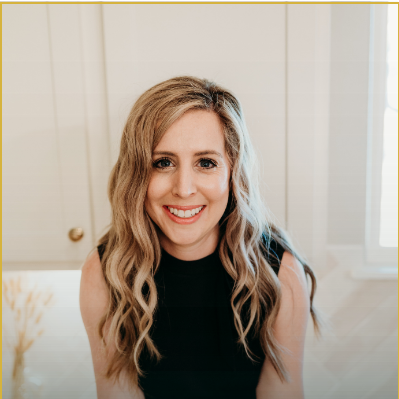
Aundrea Dudik
With over 150 clients served in Central Texas real estate, Aundrea helps her buyers navigate relocating seamlessly. Known for her expertise, she has a lot of valuable insights on her YouTube channel to make moving to Central texas a hassle-free experience.
